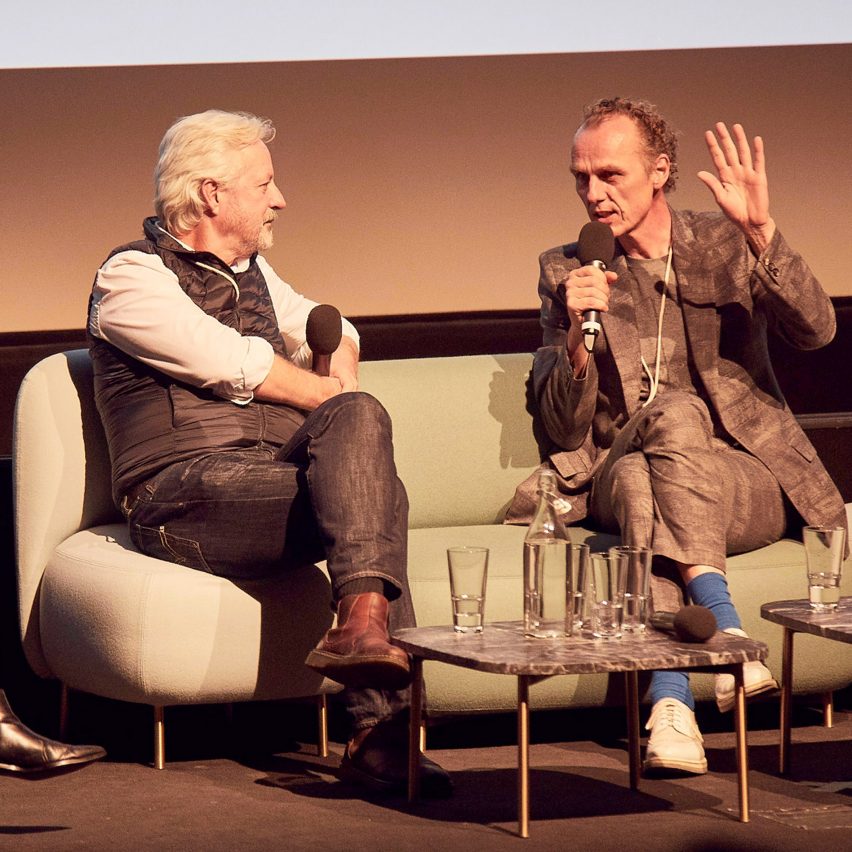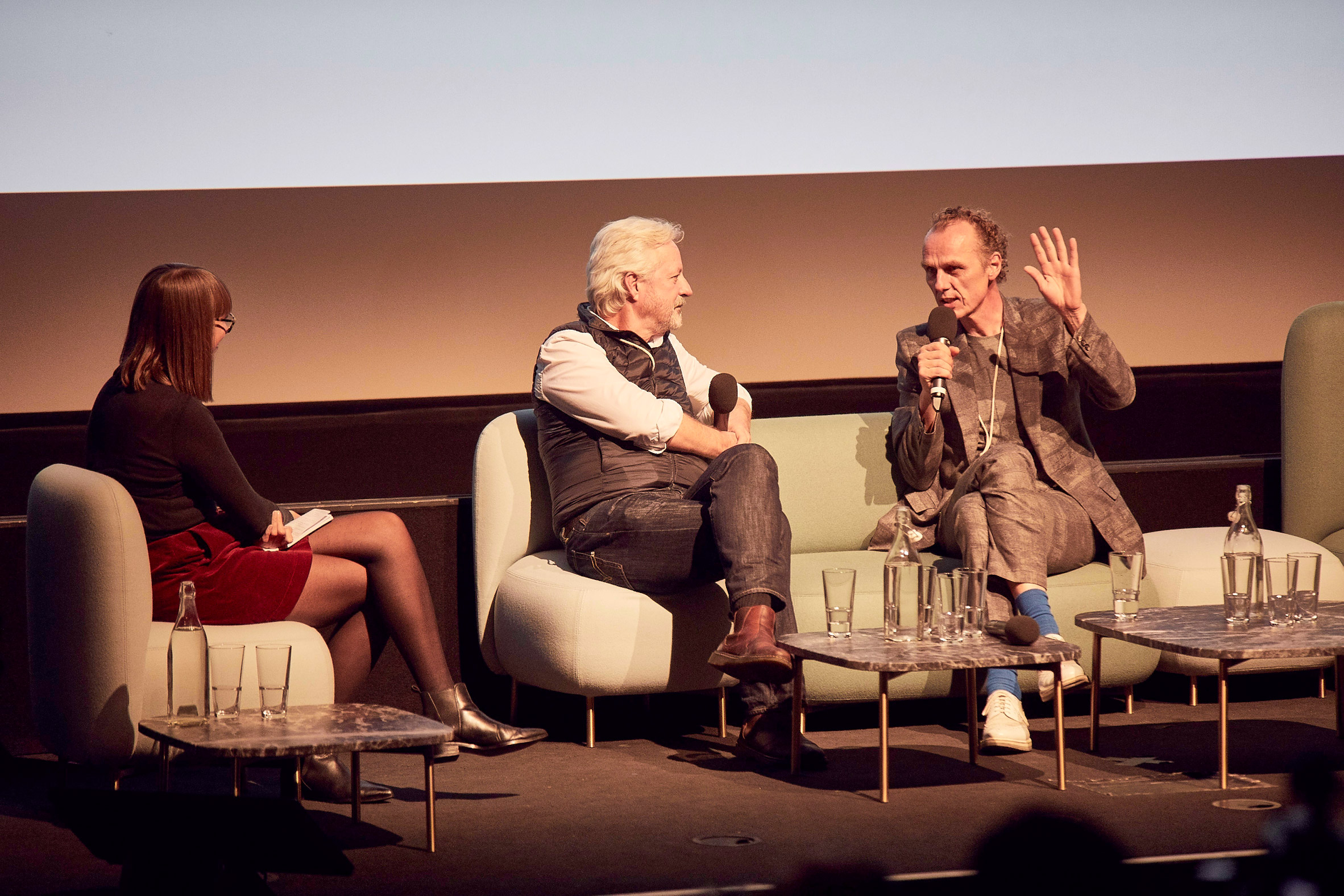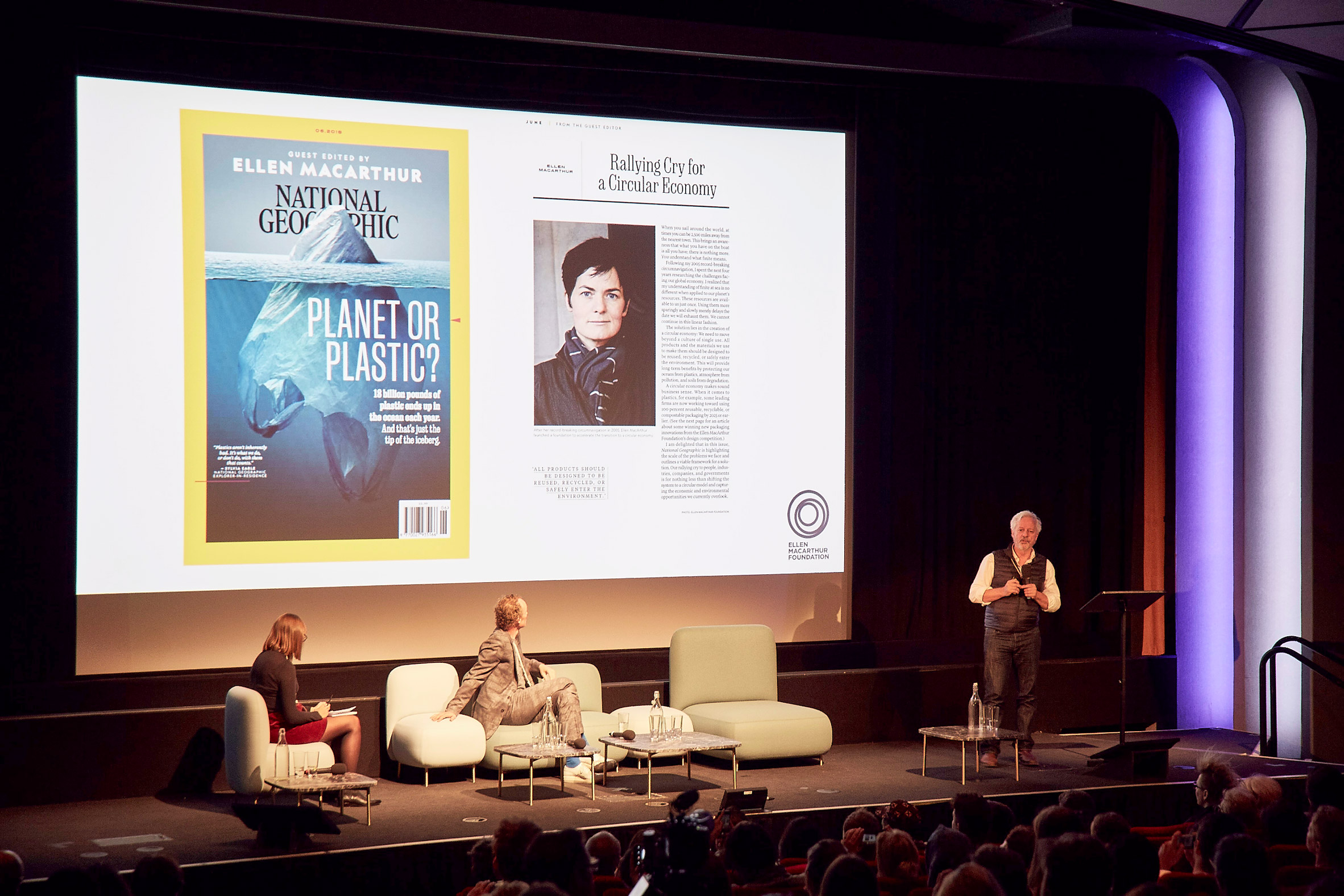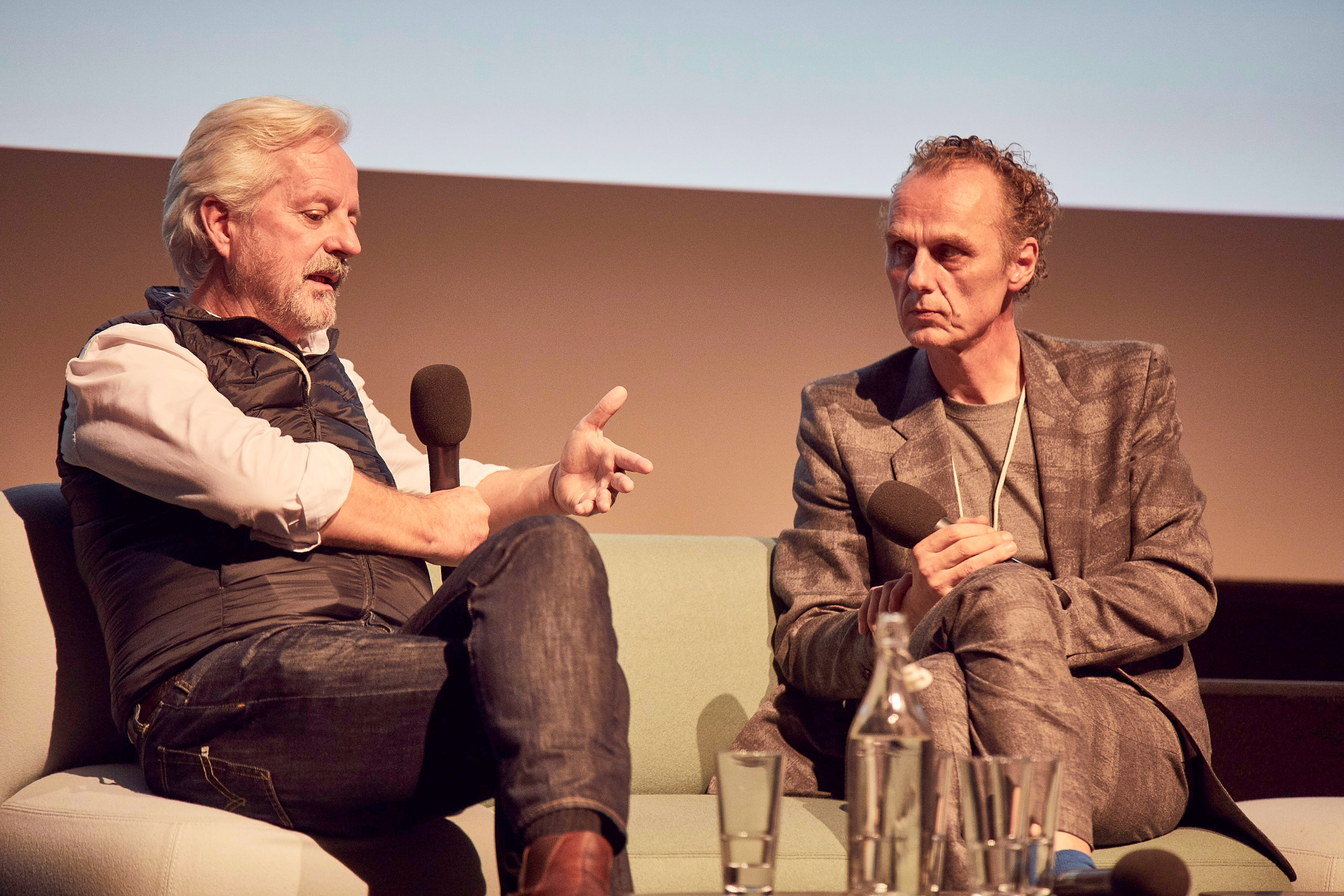
Dutch designer Richard Hutten and CEO of the Ellen MacArthur Foundation Andrew Morlet discuss the circular economy at Dezeen Day, about how designs can harness natural resources instead of jeopardising them.
Morlet, CEO of circular economy advocacy Ellen MacArthur Foundation, kicked off the talk by comparing the linear economy and a circular economy.
The former involves products with short-term use and extreme waste from low yields in recycling, and the latter focuses on reuse, repair and "continuous material flows".
"Many people equate the circular economy to be something like better recycling," said Morlet.
"But actually, it's a systems view of how to keep materials used and in use for as much as possible at the highest value."

"Its an economy that's based on three principles. Designing out waste and pollution right upfront. How do we think about keeping products and materials in use at the highest value for as long as possible? And actually, how do we think about an economy that is, by design, regenerative and restorative in nature," Morlet explained.
Morlet talked about the global plastic trash crisis and the foundation, which was featured in National Geographic's Planet or Plastic June 2018 issue. In 2016 the organisation published a document advocating developing new plastic packaging material flows with the World Economic Forum.
Hutten, a designer based in Rotterdam, jumped into the plastics conversation, saying that innovation with plastic and recycling it is "bullshit".
"Plastic is the cancer of the planet," he said. "No matter what people are saying that you can recycle it."

Hutten advocated that we harness natural resources like wind and solar power, rather than burn oil to create products that, in turn, create more waste and pollution.
"I'm from Holland, many tourists come to Holland for windmills, where we're still building windmills. We're doing it already for centuries. That is free energy."
The Dutch designer gave a historical overview of the linear economy, starting with the Industrial Revolution, and contrasted it with an image of the earth, which for Hutten embodies a true a circular economy.
"Nobody here can escape from life on Planet Earth. Everything we have is on this planet. We have to cherish it. We just have to harvest it, and that is the way we can stop the linear economy."

Hutten founded in his eponymous design studio in 1991 after graduating from Design Academy Eindhoven. He has created a variety of home objects and is also involved with Amsterdam's Droog Design led by Renny Ramakers and Gijs Bakker.
During the panel, Hutten also presented his chairs for Schiphol Airport made with a circular design as "the most exciting project" he's done in his life, although it looks "boring".
Hutten also criticised Paola Antonelli's keynote speech for Dezeen Day about human extinction and her Broken Nature exhibit at Milan's XXII Triennale.
"Paola Antonelli mentioned that we are facing a mass extinction," he said. "That is fucking true. I don't agree with that we have to design our extinction. I think we have to prevent it."
"I'm an optimist so we can still change the tide. The circular economy has no purpose if you're going to die anyway. So before that, we really have to end the linear economy," Hutten added.
Hutten, who is a member of Droog conceptual design collective, is the art director of Gispen and is moving the furniture brand towards the circular economy.
Morlet worked in medical research on HIV/AIDS before becoming a consultant strategy partner at McKinsey & Company.
The circular economy talk was a chaired by Dezeen editor-at-large Amy Frearson and was part of a number of topics discussed at Dezeen Day, including post-plastic materials, education and how to become an entrepreneur.
The all-day design and architecture conference was held at London's BFI Southbank in October.
The post Watch the video about designing for the circular economy from Dezeen Day appeared first on Dezeen.
from Dezeen https://ift.tt/37Mxc5a
No comments:
Post a Comment